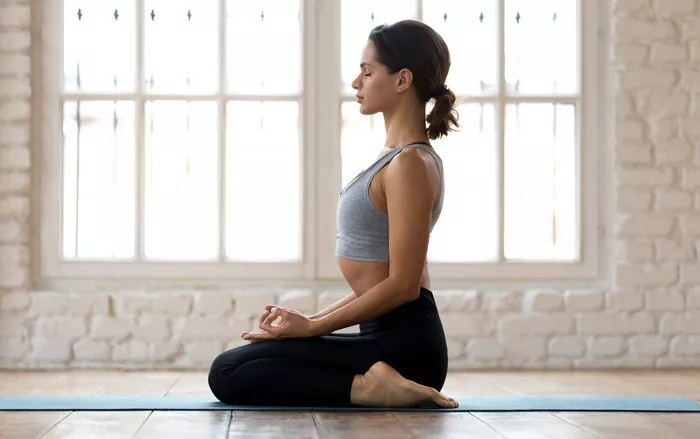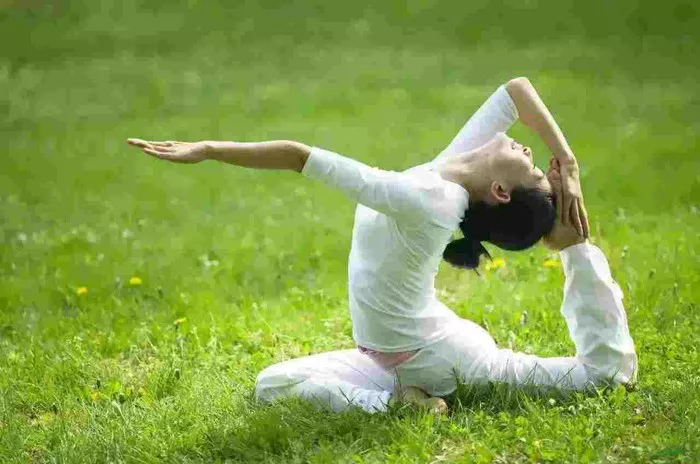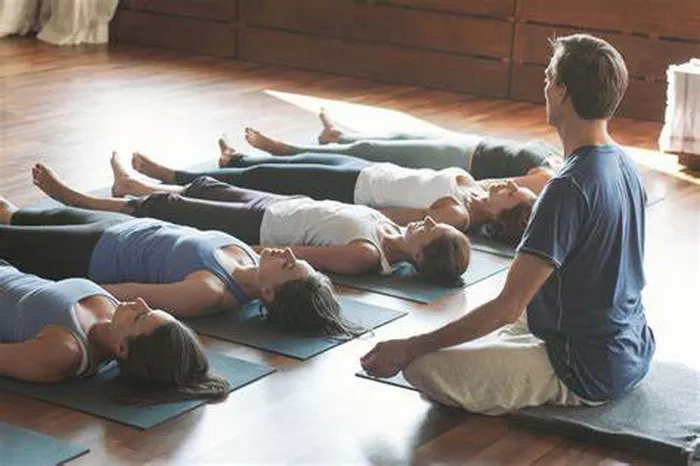Ashtanga Yoga is renowned for its dynamic and vigorous sequence of postures, known as the Primary Series. This continuous flow of poses engages multiple muscle groups simultaneously, promoting overall physical strength. From the challenging arm balances like Eka Pada Koundinyasana to the deep backbends in Ustrasana, each posture works to build muscular endurance, particularly in the core, arms, and legs.Moreover, the repetitive nature of Ashtanga practice gradually increases flexibility. As you move through the series regularly, your body becomes more supple.
Building Strength from Within
One of the most prominent physical advantages of Ashtanga Yoga is its ability to build strength. The series of postures, or asanas, in Ashtanga require significant muscular engagement. For example, poses like Chaturanga Dandasana, a forearm – plank transition, work the core, arms, and chest muscles intensively. Regular practice gradually increases muscle mass and tone, enhancing functional strength that is useful in daily activities, from carrying groceries to climbing stairs.
Enhancing Flexibility and Mobility
Ashtanga Yoga also focuses on improving flexibility. The sequence includes various stretching postures, such as forward folds, backbends, and hip openers. These stretches target different muscle groups and connective tissues, gradually lengthening them over time. Poses like Paschimottanasana, a seated forward bend, stretch the hamstrings, calves, and lower back. As flexibility improves, mobility in joints increases, reducing the risk of injuries and making movements smoother.
Boosting Cardiovascular Health
The flowing nature of Ashtanga Yoga, with its continuous movement from one pose to another, acts as a form of aerobic exercise. This elevates the heart rate, strengthening the cardiovascular system. Similar to other forms of moderate – intensity exercise, Ashtanga Yoga helps improve blood circulation, lower blood pressure, and increase the efficiency of the heart. By getting the blood flowing throughout the body, it also aids in the delivery of oxygen and nutrients to cells, enhancing overall physiological function.
The Mental Oasis: Ashtanga Yoga’s Impact on Cognitive and Emotional Well – being
Beyond the physical benefits, Ashtanga Yoga has a profound impact on mental health.
Cultivating Mindfulness and Presence
Ashtanga Yoga requires intense focus on the breath and the movement of the body. This focus forces the mind to stay in the present moment, eliminating distractions. When practitioners concentrate on synchronizing their breath with each pose, they develop mindfulness. This ability to be present helps reduce rumination about the past or anxiety about the future, leading to a greater sense of calm and inner peace.
Reducing Stress and Anxiety
The practice of Ashtanga Yoga stimulates the release of endorphins, the body’s natural mood – elevating chemicals. Additionally, the physical postures and breathing techniques help activate the parasympathetic nervous system, which promotes relaxation. When the body is in a relaxed state, stress hormones such as cortisol decrease. As a result, regular Ashtanga Yoga practice can significantly reduce feelings of stress and anxiety, allowing individuals to better cope with the pressures of daily life.
Improving Mental Clarity and Focus
As the mind becomes more accustomed to the focused nature of Ashtanga Yoga, mental clarity and focus improve. The discipline required to maintain the sequence of postures and the concentration on breath work train the brain to be more attentive. Over time, this enhanced focus translates into improved performance in other areas of life, whether it’s work, study, or personal hobbies.
The Inner Fire: Ashtanga Yoga’s Role in Prana and Energy Flow
In the context of yoga, the concept of prana, or life force energy, is crucial, and Ashtanga Yoga plays an important role in enhancing its flow.
Awakening the Inner Energy
Ashtanga Yoga uses specific breathing techniques, such as Ujjayi breath, to stimulate the flow of prana. Ujjayi breath, a deep, audible breath, warms the body and energizes the system. When combined with the physical postures, it helps awaken and circulate the dormant energy within the body. This awakened energy can lead to a greater sense of vitality, motivation, and overall aliveness.
Balancing the Chakras
Chakras are energy centers in the body, and Ashtanga Yoga postures are believed to influence their balance. For instance, heart – opening postures like Ustrasana (Camel Pose) are thought to activate the Anahata chakra, associated with love and compassion. By practicing a variety of postures that target different chakras, Ashtanga Yoga helps maintain a harmonious flow of energy throughout the body, promoting physical, mental, and emotional balance.
The Discipline Factor: How Ashtanga Yoga Fosters Self – Growth
Ashtanga Yoga is not just about physical and mental health; it also serves as a powerful tool for self – growth.
Developing Self – Discipline
The structured nature of Ashtanga Yoga, with its fixed sequence of postures and the requirement to practice regularly, instills self – discipline. Practitioners must commit to their practice, even on days when motivation is low. This discipline extends beyond the yoga mat, influencing other aspects of life, such as work ethic, time management, and personal goals. By learning to show up for their practice, individuals develop the ability to follow through on commitments in all areas of life.
Fostering Self – Awareness
Ashtanga Yoga provides a space for self – exploration. During practice, individuals become more aware of their physical limitations, mental patterns, and emotional reactions. For example, when struggling with a difficult pose, one may notice feelings of frustration or impatience. This self – awareness allows for personal growth as individuals can then work on transforming these negative patterns into more positive and productive ones.
The Community Connection: Ashtanga Yoga’s Social Benefits
Ashtanga Yoga also has a strong social aspect that contributes to its overall goodness.
Creating a Supportive Community
When practicing Ashtanga Yoga in a studio or group setting, individuals become part of a community. This community provides support, encouragement, and a sense of belonging. Practitioners can share their experiences, challenges, and triumphs with others on a similar journey. The social interaction within the Ashtanga Yoga community helps reduce feelings of isolation and promotes a positive social environment.
Learning from Others
In an Ashtanga Yoga community, there are opportunities to learn from more experienced practitioners and teachers. Observing others’ practice, learning new techniques, and receiving feedback can enhance one’s own practice. This exchange of knowledge and experience enriches the learning process and helps individuals progress more quickly in their Ashtanga Yoga journey.
Conclusion
In conclusion, Ashtanga Yoga offers a comprehensive range of benefits that touch every aspect of human life. From building physical strength and flexibility to enhancing mental well – being, awakening inner energy, fostering self – growth, and creating social connections, it truly is a holistic practice. Whether you are looking to improve your physical fitness, reduce stress, gain self – awareness, or be part of a supportive community, Ashtanga Yoga has something to offer. By incorporating this dynamic practice into your life, you can embark on a journey of self – discovery and overall improvement, leading to a more fulfilling and healthy life.






















